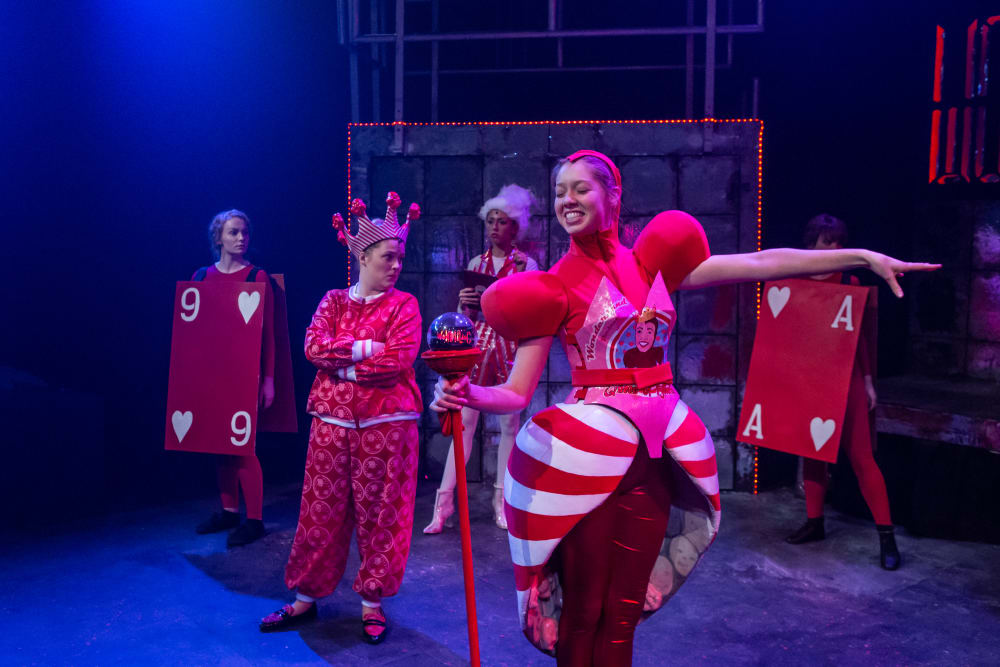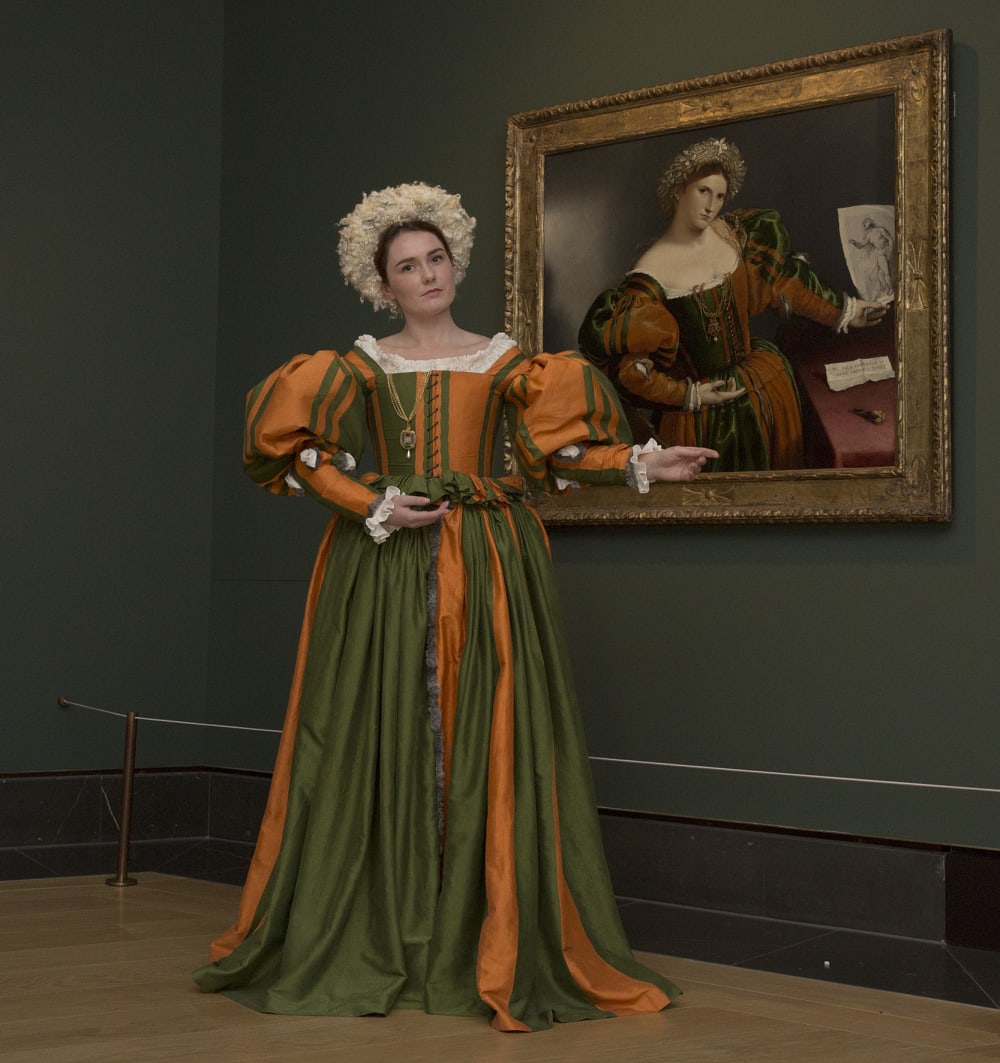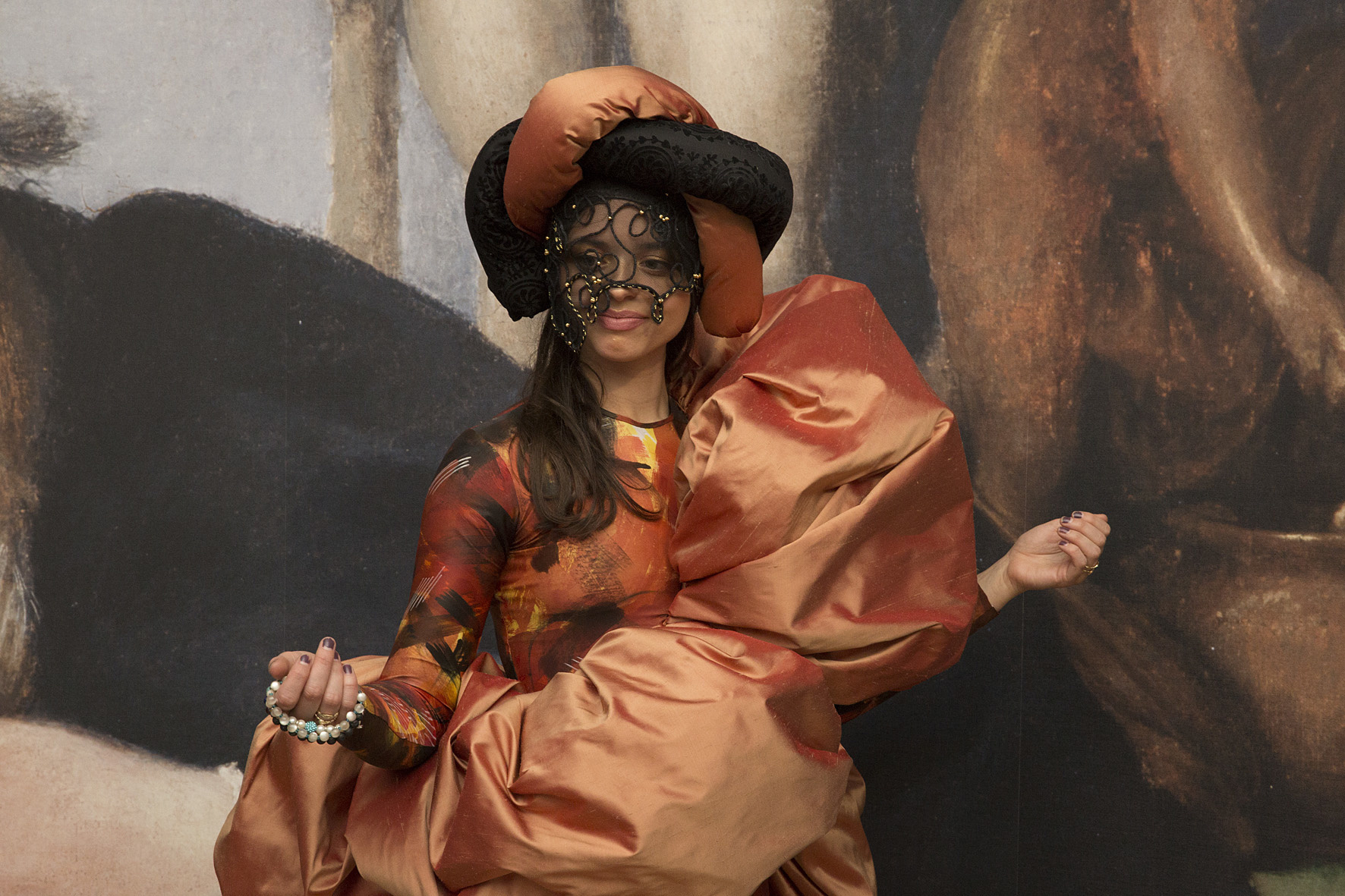Kevin is far from a stranger to costume design, having worked within the industry for more than 30 years. He is also familiar with Wimbledon having studied here himself. He’s a designer by trade having worked within the costume/fashion/interiors industry, freelanced as well as under his own labels. His work has covered all genres including opera, film, the BBC and theatre. His main area and true (design) love, however, has always been bespoke and one-to-one client design.
Tell us about your career?
After graduating in Theatre Design from Wimbledon, I worked in theatre and costume for a while before deciding to shift direction and set up my own business, Diva Bridalwear, in the mid 90s. To me at the time, bridal wear seemed to embody the theatricality of costume (weddings are after all theatrical events) but with much less stress (I was very young and naïve then).
I was, however, really lucky in that my first sample for the label appeared on the front cover of Bride’s Magazine. That completely set me up from there. My work was quite avant garde at a time when bridalwear was about frills and over blown ‘meringues’, I produced a dress that had a black bodice and another that was sleek, backless and figure hugging in satin back crepe. Not earth shattering now but they did extremely well at a time when there was nothing else like them on the market. In fact, the label did so well that I had to decide to either expand in to small scale manufacture or stop – so I stopped and went to work in the designer bridal industry to ‘learn the trade’.
I moved to Brighton around 15 years ago and set up my current label – Renaissance (the name was chosen to represent all the elements of design that I enjoyed) – which was totally client focused and had an emphasis on creative cut, couture finishing and elaborate surface detail and decoration. My client base has been very broad, bonkers and extremely good fun, incorporating celebrity dressing, design for drag, collaborations with some amazing creative teams for international publications including Vogue, Vogue Italia and XO New York; whilst continuing the avant garde bridal couture started with Diva.
In regards to education, I began my teaching career just six months after graduating, teaching adults pattern cutting and interior design in an FE institution. I have since spent my career balancing the two professions. I believe that teaching keeps me current and challenges me to stay abreast of innovation and trends, whilst being a practitioner enables me to stay connected to industry and engage with real deadlines and methods of working: both ensuring that I can input a real experience and expectation for my students, underpinned by a solid grounding in both disciplines. During my career, I have taught all age groups and abilities, have lectured in China and Europe and will be lecturing in Russia in 2020. I have been very honoured to have worked in some incredible venues including the Royal Albert Hall, Kensington Palace, The Globe and Brighton Pavilion.

Tell me about Wimbledon and your vision as course leader?
This is my third year at Wimbledon and it was in a very interesting place when I came on board. My remit was to blow the dust off the course, whilst continuing to respect the tradition, craft and essence of what Wimbledon Costume is, bringing this up to date and reimagine what costume actually meant.
Wimbledon has always had an amazing reputation for costume but it had become set in its ways – we were very much known for historical or museum quality costumes, which to me resembled overstuffed armchairs or in the case of the designers, were very poorly made. I was brought in to think about new directions in costume - digital, multi-media, innovation in fabric and fabrications and to explore new methods of construction that acknowledge the movement and physicality of the performer. In essence, to think about what costume is in a much broader sense.
On the course, costume can be installation, film, theatre, museum, virtual costume, animation, curation, conservation – in short, it’s whatever the student thinks costume can be, as long as it is excellently executed and underpinned by solid research and contextual understanding.

So, what can students expect from the course?
Firstly, I think it’s important to highlight that there are two pathways, although it’s one course – there is a design pathway and an interpretation pathway. Regardless of the pathway chosen we aim to produce graduates that have a high technical ability, confident skill set and strong personal aesthetic.
The interpretation students may expect to go into workrooms and Costume Houses and become the makers of the industry, or they may become self-employed makers or costume construction specialists and conservators. On this pathway they will engage with bespoke tailoring, corset making, tutu making, historical cut and construction and bespoke and hand finishing techniques. Traditional methods of printing, dyeing and breaking down become embedded in their practice but they also have the opportunity to engage with new methodologies such as digital printing and digital embroidery. With all of that tradition we still encourage students to explore new innovations in fabric, textiles and approaches to construction. What we often say is that we use history to inform the future.
The design students also make, as it is important they are able to construct costume to a good standard. Having this skill allows them to integrate more successfully within industry and have more productive dialogue with interpreters or other makers. Students are taught how to be innovative from the start of the second year, looking at experimental cut as part of design development, textile application and new developments in fabrics and fabrications. An example of this is a recent project we did with creative cut and projection mapping. Rather than having a performer bring the costume to life, we created a costume using sculptural construction technique then animated it with film and video. Design students will work conceptually; they will take a script, text or concept and then develop it to a final outcome. The work is much more based in understanding a story, and creating a narrative for a specific audiences that allows that story to be told.
What trends should students be aware of?
Digital! This is probably one of the biggest.
Costume is fascinating as it is constantly moving forward, so areas such as digital approaches, technological advances, new fabrics and concept art will all play a massive part in the development of the discipline alongside the tradition that we must not lose. A practical example of this is men’s tailoring – the industry needs tailors so we ensure we can provide them. Sustainability is a massive discussion within the industry and this must have and will impact on the students now and in the future.

Can you tell me about some of the projects that are on the horizon?
One important aspect about the course and the projects we do is that we create new projects and opportunities each year; we don’t have a set list of projects that students do repetitively. We constantly look for new challenges to allow students to work in real settings or with contemporary dialogues.
An example is the Ely’s department store window project that is currently on display in Wimbledon. We worked with the local department store to have students develop tutus for the Christmas shop window based on their corporate theme of ‘Stars’. This was an optional project and the designers who chose to undertake this had a very intense introduction to their second year. They had to turn around a design to the theme, produce fabrics and fabric samples and then present a complete concept to the Visual Merchandising Manager of Ely’s in one week. This was then handed over to an Interpretation student to produce in four weeks. Very intense but what a great addition to the students CV in the first project of their second year?
We have just completed another project with the Academy of Live and Recording Arts (ALRA), a local drama school. We worked with them to design and create the costumes for their production of Dickens’ “Christmas Carol”, a new, contemporary reworking – this is a third-year costume design project. It is very stressful doing these kinds of projects; but very valuable.
We are also doing an installation at the Victoria & Albert Museum on May 1st. The institution has an annual festival and the theme this year is ‘Dance’. Interpretation students will look at some of the archive illustrations of costume and recreate those. The design students will look at artefacts or character-based work and create costumes based on a concept exploring various aspects of the collections. This is a similar project to the one we worked on last year with the National Gallery working in the Lorenzo Lotto Exhibition, again in collaboration with ALRA.
Contextual studies are now embedded into practice which means that Theatre Design, Production Arts and Costume are all going to be working on the Tempest. Students will be able to engage in dialogue based around their programme but develop ideas around their specialisms. For us, this will result in a ‘Costume in Motion’ event at the Centre Court Shopping Centre in May – I love the contrast of theatrical costume in urban, commercial spaces.


Can you think of any highlights during your time as course leader?
Lots! I’m very happy to say.
Last year we were rated as one of the top 10 Costume Design Courses in the world by the Hollywood Reporter. We featured twice in the top ten, the second time with an endorsement from designer, Jane Petrie and the only course in Europe to feature.
Costumes from the National Gallery/Lorenzo Lotto Project were featured in The Times and an article I wrote for Opera Now Magazine was published featuring the work of my third year Interpretation students. This article was based on their realisation of Erte’s designs for Der Rosenkavalier at Glynedebourne in 1980. John Cox, the original producer came and spoke to the students about the opera, which was an absolute coup (especially being as I am a massive fan of his work – Hockney’s ‘Rakes Progress’ and Versace’s ‘Capriccio’ are part of his CV).
I was incredibly proud to have two second year costume designers as finalists in the Golden Shears Competition – a Tailoring Competition organised by Savile Row – the first time Wimbledon had entered and we were showing work alongside apprentices from Savile Row and the Atelier Course at Rochester, as well as our colleagues from the tailoring course at London College of Fashion.
We had four finalists in the first ever Patterns for Performance Competition organised by the Costume Society. Of these four finalists, we also had the overall winner, Clara Gelston, with her award for her costume for The Alchemist being presented by Michele Clapton (Game of Thrones).
We have had some glittering successes; however, I still think the most outstanding highlight has to be the Costume Degree Show 2019. The commitment to the organisation, fund raising, curation and presentation of the show by those students was mind blowing. They started to help me shape and develop the course in their second year and their hard work was entirely justified when it was commented on as being ‘the best show for fifteen years’. It really identified and consolidated the new direction and sense of fun that I hope will become associated with Costume for Theatre and Screen in the future.
To find out more about BA Costume for Theatre and Screen

